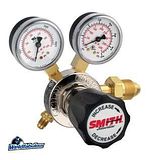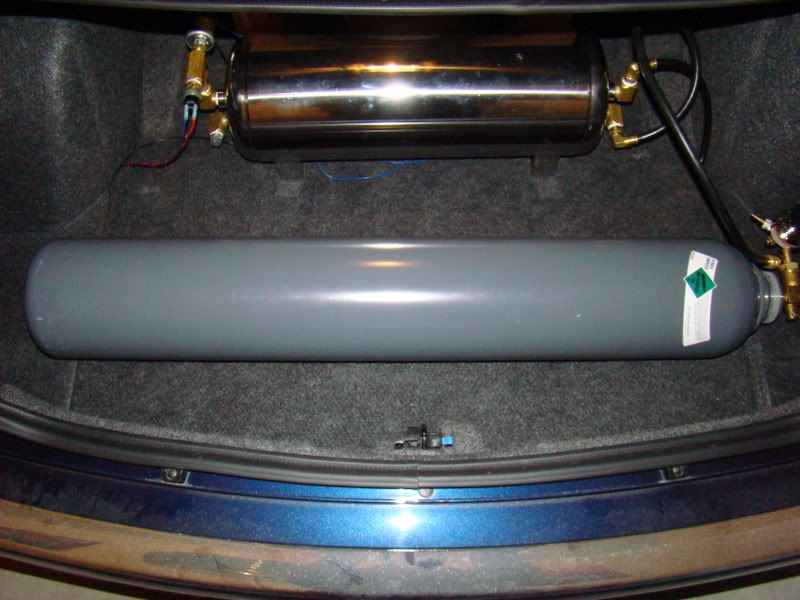So, running nitrogen tanks for an airride setup isn't uncommon in the mini-truck scene apparently. Heavy duty tank reservoirs store heavily pressurised nitrogen (depending on the tank, but figures of 3000 PSI are normal) and this is the source of air instead of continually using compressors to keep the tanks filled up. So essentially, these nitrogen tanks replace the compressors. They are connected up to the main tank ports and the amount of pressure going in to them is controlled by a regulator - if the regulator is set to 150 PSI, then the regulator will only open up when the pressure falls below 150 PSI. As soon as it fills up to 150 PSI, it'll close up again.

The advantages:
- No noise
- No amp draw
- (Essentially having no compressors in the system is the big advantage)
- Long service time (even better if it's a tank that can hold 6000 PSI, and you have multiple tanks)
- Uses a lot of space and is very heavy
- Can leave you stranded without any air to air-up
- Inherent danger of having something at an extreme pressure set loose if a big rear-end accident occurs
- Continual costs - need to pay to have the tanks refilled (albeit not very expensive)
- Chance of asphyxiation if airing out is done in a confined space.
Of course, one could install both a nitrogen tank and compressor setup together - have the system run so that once the nitrogen tank drops to a certain pressure (~150 PSI I guess), the compressor can take over the duties of pumping the air tank. But having this kind of setup in a hatchback isn't feasible I think... Maybe in a big car like an A8 or a weekender/show car, but definitely not in the 8L.
Thanks to AirSociety forums for most of the info.

No comments:
Post a Comment